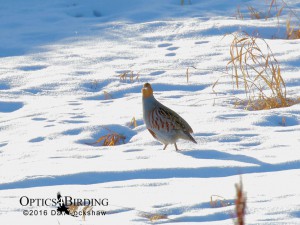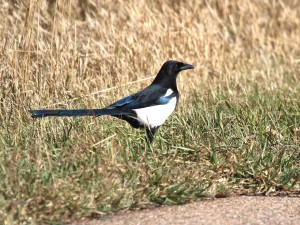I took a very brief trip (5 days) to see the winter birds of Calgary Canada. I did this at the end of January and beginning of February. My primary reason for traveling to this area was to look for Snowy and Hawk Owls. In the continental United States these two owls are not very common. Small numbers usually do show up though most years in the northern states. Hawk Owl would be the most uncommon of these two species. Along with the owls, the mammals and winter birding this far north promised to offer other interesting species. These would include several that I would not find in Southern California. There would also be some that may not be very common in the lower 48 states at all.
Grey Partridges
The Grey Partridges are a pleasure to find. There were several coveys in the area. These were new to me. They are fairly common this far north although I had never seen one. I have been singing 🎼♪ “and a partridge in a pear tree” ♫ every Christmas since I was a kid. It was a pleasure to actually have a picture in my mind of what they look like. Seeing them in action was a pleasure. They seemed quite similar to our quail being in groups running around on the ground (missed any in pear trees!). I was fortunate enough to have had the opportunity to bring a pair of Zeiss Victory SF 10×42 Binoculars with me for review. For now, all I will say is “WOW, The views through these binoculars are incredible”. Continue reading


